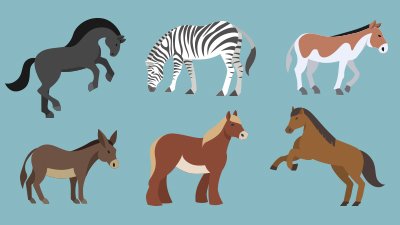Potatoes: the Fuel of Life?
BBC: “Starch ‘fuel of human evolution’”
They are the icons of evolution that many have used to prop up Darwinism: Galapagos finches, peppered moths, Lucy, the Miller–Urey research, Archaeopteryx, and potatoes. Wait a second—potatoes?
That’s right, it seems, based on recent research published in Nature Genetics. The scientists were hoping to help answer the question of what provided the boost in calories to fuel the expansion of human brains, thought by evolutionists (of necessity) to have increased in size dramatically since our supposed ape-brained ancestors.
The scientists were hoping to help answer the question of what provided the boost in calories to fuel the expansion of human brains.
Experts once thought the answer lay in meat, but study participant Nathaniel Dominy, an anthropologist at UC–Santa Cruz, explains why the team considers that possibility doubtful:
“Even when you look at modern human hunter-gatherers, meat is a relatively small fraction of their diet. To think that, two to four million years ago, a small-brained, awkwardly bipedal animal could efficiently acquire meat, even by scavenging, just doesn’t make a whole lot of sense.”
So if meat isn’t the answer, what else could possibly account for the increase in calories? The team thought they were closing in on the answer after they discovered that humans carry extra copies of gene AMY1, which is necessary for the production of a starch-digesting enzyme called amylase that is present in saliva. Chimpanzees, for example, have only two copies of the gene.
Intrigued, the team examined groups of humans with different diets and discovered a positive correlation between the starch consumption in each diet and copies of AMY1 in each group’s members. For example, the members of a Japanese group, who consume rice-rich diets, had more copies of AMY1 than the members of an Arctic group, who eat mostly fish.
Thus, the team concluded that in locales with an abundant supply of starch, natural selection favored individuals with the gene. This starch-digesting favorability increased after humans mastered fire, the researchers argue.
Interestingly, it’s an evolutionist—who happens to be a professor of philosophy of science—who points out the layer of interpretation such studies as this rely on. John Dupré of the University of Exeter “urge[s] caution when interpreting the findings,” reports the BBC. Dupré explains:
“Lots of things differ between ourselves and our closest relatives and apart from the difficulty of establishing the relative places in the evolutionary sequence of any of these, the assumption that there is any one fundamental to such change is dubious.”
Of course, while we agree that there are dubious assumptions and much interpretation involved, and that “[l]ots of things differ between ourselves and [chimps],” we go a step farther: removing evolution (in any Darwinian sense) from the explanation entirely. Indeed, the study’s results can be understood with equal, if not more, clarity and coherence within the creationist framework.
The only explanation for the origin of the massive amount of information in both animal and human genomes is an intelligent creator.
First of all, although the researchers simply assumed that “evolution” had “made” this gene, AMY1’s origin cannot be explained by natural selection acting on chance mutations, which has never been shown to create new information. The only explanation for the origin of the massive amount of information in both animal and human genomes is an intelligent creator. Also, note that the difference in AMY1 copies among various people groups that were tested does not indicate the presence of any new information, just as photocopying a newspaper article does not give you new information.
Second, the process of natural selection—environmental adaptations that manipulate pre-existing genetic information—can explain why various people groups average varying numbers of AMY1 copies. Natural selection (as it is actually observed, not as evolutionists portray it) is entirely compatible with the Bible’s account of creation. It is both observed in nature and is an important theoretical construct for understanding how life-forms adapt to their environments, such as humans with extra AMY1 copies enjoying an advantage in high starch environments, with the opposite being true in low-starch environments.
The problem is, the actual results of studies, such as this one, are often framed in evolutionary interpretation that is treated as just as factual as the results. It often takes a trained eye to spot and distinguish the evolutionary interpretation from the actual discovery.
Of course, that’s our goal with News to Note—to train your eyes to distinguish factual observations from evolutionary interpretations, which are based on false assumptions!
For more information:
Remember, if you see a news story that might merit some attention, let us know about it! (Note: if the story originates from the Associated Press, Fox News, MSNBC, the New York Times, or another major national media outlet, we will most likely have already heard about it.) And thanks to all of our readers who have submitted great news tips to us.
(Please note that links will take you directly to the source. Answers in Genesis is not responsible for content on the websites to which we refer. For more information, please see our Privacy Policy.)
Recommended Resources

Answers in Genesis is an apologetics ministry, dedicated to helping Christians defend their faith and proclaim the good news of Jesus Christ.
- Customer Service 800.778.3390
- Available Monday–Friday | 9 AM–5 PM ET
- © 2026 Answers in Genesis






